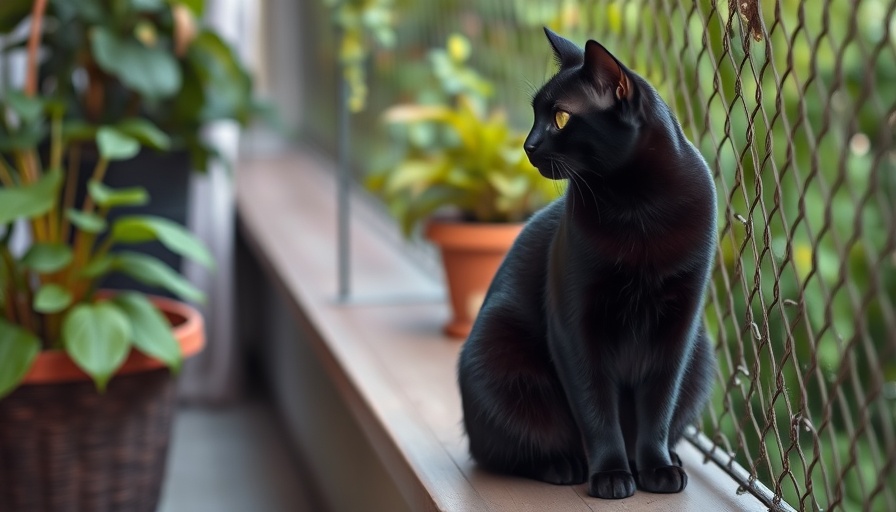
Understanding the Dual Nature of Cats: Lessons from Raphael
The fascinating journey of cat ownership often reveals insights into the animal's nature and our own emotional responses to them. Raphael, a Russian Blue, serves as a perfect illustration of this duality. While kittens can bring joy and laughter, they can also unleash a whirlwind of chaos, reminiscent of the contrasting personalities in Robert Louis Stevenson’s The Strange Case of Dr. Jekyll and Mr. Hyde. Just as Dr. Jekyll's transformation into Mr. Hyde showcases the darker side of human nature, so too does Raphael display his playful ferocity.
Why Do Cats Behave This Way? Understanding Feline Psychology
Cats, with their predatory instincts and nuanced personalities, sometimes reveal behaviors that can be perplexing to their owners. These actions may range from affectionate nibbles to sudden, sharp attacks—often leaving us questioning their motives. In Raphael’s case, as he matured from a feral kitten into a more confident adult, his behavior shifted. It reminds us that even the gentlest creatures can exhibit elements of unpredictability. This duality highlights a crucial lesson for cat owners—understanding the motivations behind their pet's behavior can bolster our relationship. Rather than simply viewing these moments of aggression as malice, we can frame them as expressions of innate instincts.
Training Techniques to Foster Positive Behavior
Effective training is essential for cultivating well-rounded pet behavior. Positive reinforcement techniques can be invaluable in helping pet owners manage their cat's energetic nature. For example, offering treats or praise during calm moments can guide them toward more positive interactions. Acknowledging that kittens like Raphael were once in a phase characterized by untamed energy allows us to practice patience as they develop boundaries. This reinforces the understanding that training helps shape behavior rather than solely responding to it. In providing this proactive approach, veterinarians and trainers play a crucial role in educating pet owners on effective methodologies to manage aggressive tendencies in playful contexts.
The Emotional Toll of Cat Ownership: Finding Balance
As pet parents, it is essential to highlight the emotional nuances involved in navigating cat behavior. Every scratch or nibble can stir feelings of hurt, but it’s imperative to remember that these incidents are rarely personal. Raphael’s actions—akin to Mr. Hyde's unpredictability—often reflect an impulse rather than intentional malice. This understanding can foster empathy in our relationships with pets. Remarkably, many caretakers experience a sense of guilt or frustration after an incident, and by engaging in discussions with peers, veterinarians, or online communities, they can find support and shared experiences. Engaging in these dialogues humanizes pet ownership and deepens the connection to these complex beings.
Creating Safe Spaces: The Role of Catio Builders and Accessories
To enhance the well-being of both cats and their owners, creating a safe and engaging environment is paramount. This is where catio builders and pet accessory developers come into play. A catio not only provides an outlet for their curiosity but also minimizes the chances of erratic behavior within the home environment. By having a space to safely explore, cats are less likely to feel constrained, and in turn, exhibit a more relaxed demeanor at home. It’s a win-win for cat owners and their furry companions, leading to healthier emotional interactions.
Conclusion: Embracing Our Cats’ Complex Nature
Raphael's journey from a chaotic kitten to a dignified adult cat embodies the complexities of feline behavior. As pet parents, the key lies in embracing these complexities while working towards creating an environment that nurtures both sides of our pets’ nature. By investing time in understanding and, where necessary, training, we can better manage the duality inherent in our feline companions. Engaging with professionals—be it veterinarians, trainers, or simply other cat owners—can provide invaluable insights and techniques to foster better relationships with our pets.
For those navigating the the rewarding if challenging waters of cat ownership, don’t hesitate to reach out to local pet communities, training resources, or comfort and grief counseling services when needed. Remember, we’re all in this together, striving to build healthier, positive relationships with our beloved furry friends.
 Add Row
Add Row  Add
Add 




Write A Comment